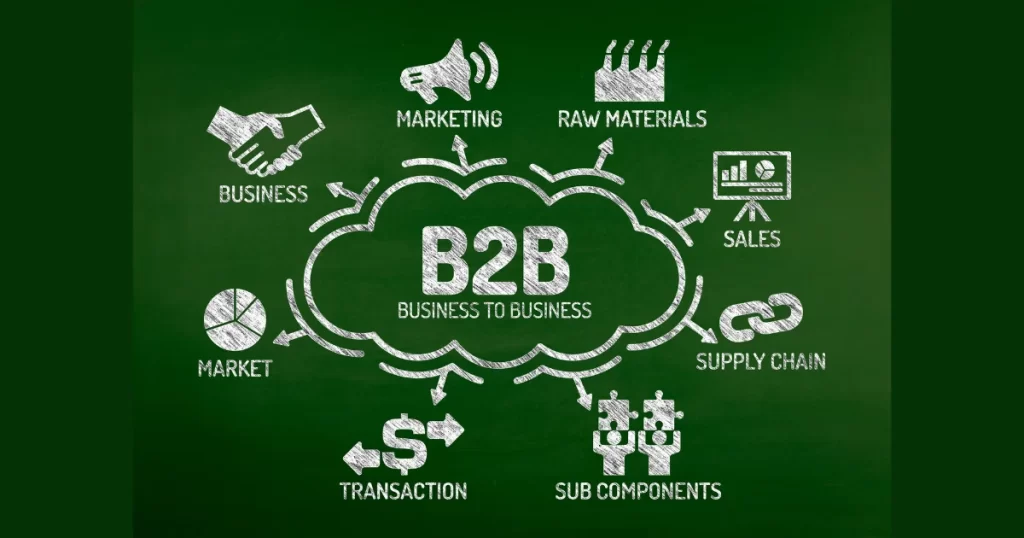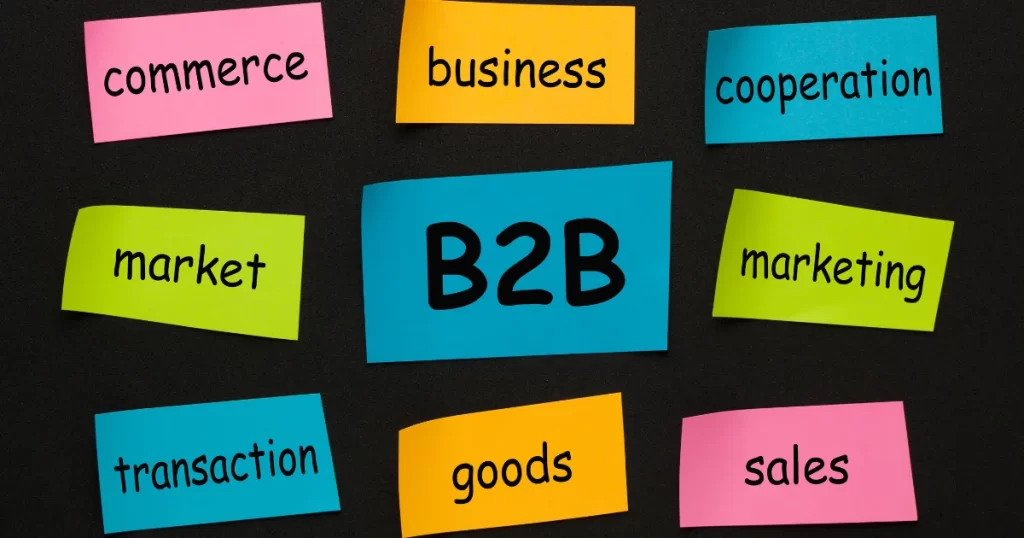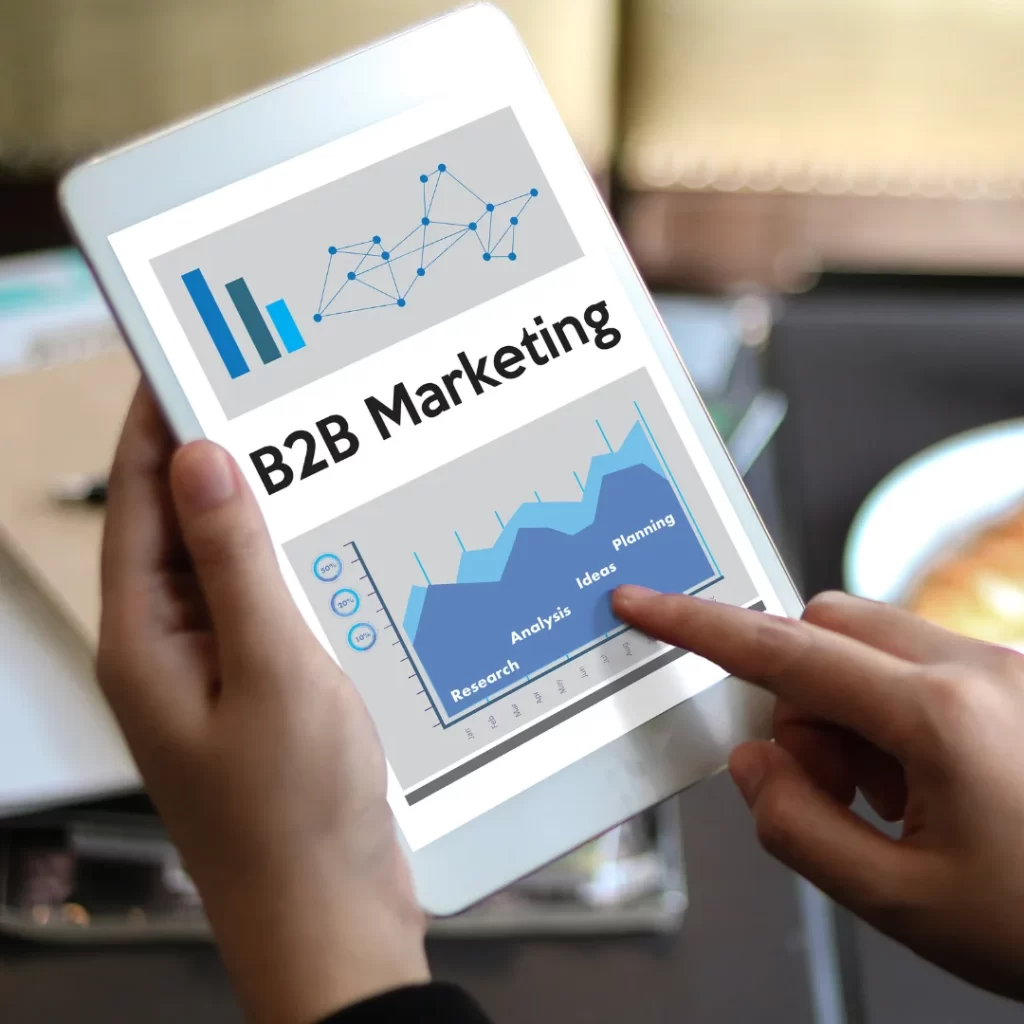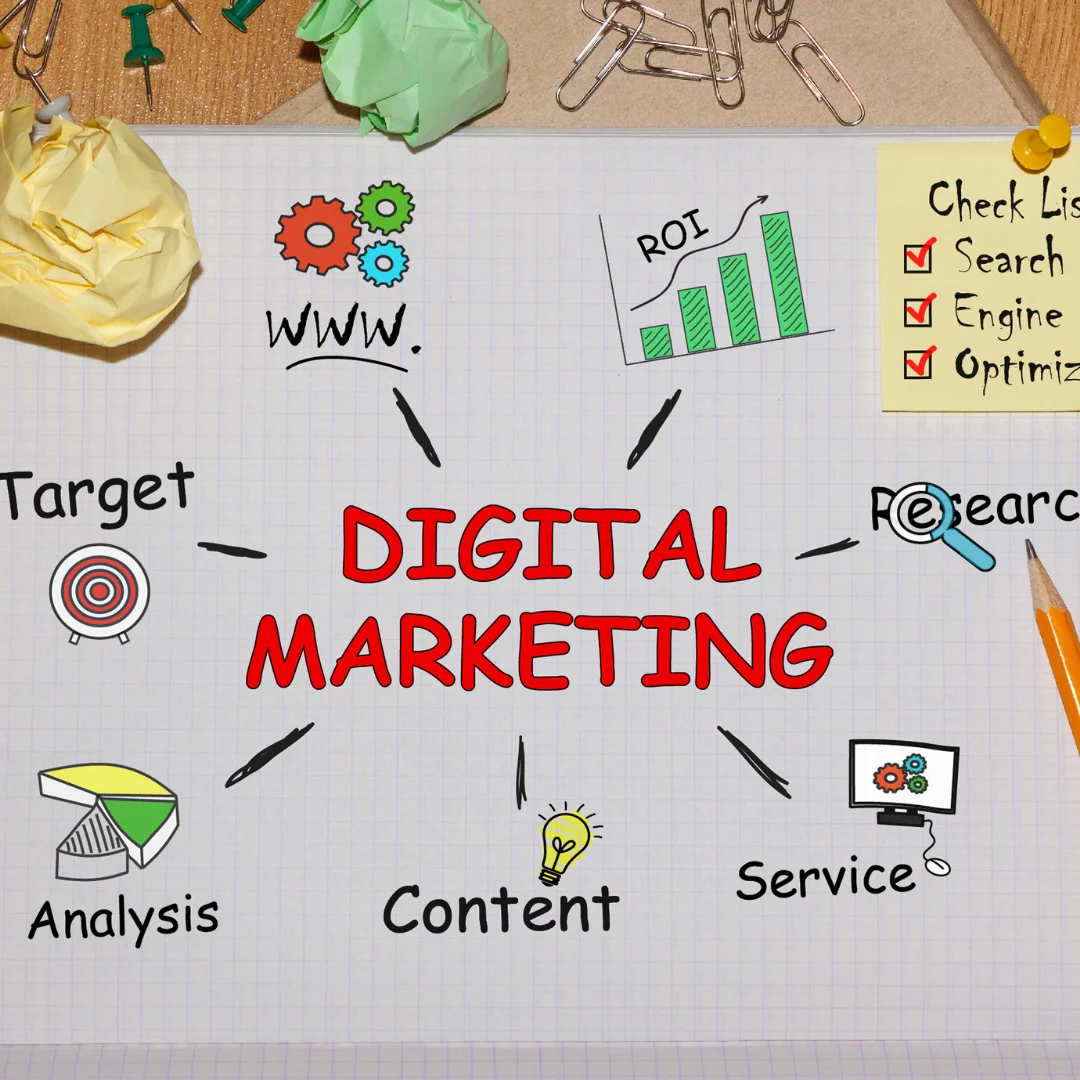Buckle up, startups! If you’re navigating the maze of B2B marketing in 2025, this is your cheat sheet. We’ll break down the 10 best strategies to help you crush the competition, win hearts (and wallets), and avoid marketing flops that haunt your dreams. It’s time to embrace bold ideas, witty campaigns, and strategies that speak to your audience like a best friend with a Ph.D.
Welcome to the Wild West of B2B Marketing

Let’s be honest: B2B marketing isn’t for the faint of heart. It’s like trying to pitch a groundbreaking idea to a room full of skeptics who’ve heard it all before. Picture this: you’re shouting into a void, praying some suited-up exec with decision-making powers hears you. It’s not glamorous, but for tech startups in 2025, it’s absolutely essential.
Here’s the thing—tech startups don’t have the luxury of mediocrity. Either you stand out, or you’re invisible. The stakes? High enough to make your palms sweat. The rewards? Let’s just say you’ll finally afford that espresso machine for the break room.
This guide is your ultimate compass for B2B marketing in 2025. Whether you’re crafting irresistible email campaigns, sliding into DMs on LinkedIn (with finesse), or breaking into TikTok to charm Gen Z decision-makers, we’ve got you covered. It’s time to cut through the noise, crank up your creativity, and make your startup the talk of the boardroom.
1. Email Marketing: The Comeback Kid
You’ve probably heard the whispers: “Email is dead.” Spoiler alert—it’s not. In fact, email marketing is alive, kicking, and bench-pressing ROI like a champ.
Why Email Marketing Still Reigns
Emails land directly in your prospects’ inboxes. It’s personal. It’s intimate. And it’s the one place where algorithms don’t bury your message under cat videos or viral memes. (Not that we’re against cat videos.)
Segment Like a Pro
The days of one-size-fits-all emails are over. Segmentation is your secret weapon. Break down your email list by:
- Job Titles: A CTO and a junior developer have very different priorities. Speak their language.
- Company Size: What works for a scrappy startup won’t resonate with an enterprise giant.
- Stage of the Buyer’s Journey: Tailor messages to where your lead stands—whether they’re just curious or ready to buy.
Example Table:
| Segment Category | Tailored Content Example |
|---|---|
| New Leads | Welcome emails with an intro to your product or service |
| Warm Prospects | Case studies and testimonials to build credibility |
| Existing Customers | Updates on new features and exclusive offers |
Creative Outreach: Say Goodbye to “Dear Sir/Madam”
Nobody—and I mean nobody—wants to open an email that reads like it came from a robot. Instead:
- Use humor: “We know you’re busy conquering the corporate world, but here’s why you’ll want to hear us out.”
- Be relatable: “Struggling with [insert pain point]? Been there, fixed that.”
- Add a personal touch: Referencing a specific challenge they face shows you’ve done your homework.
Drip Campaigns for the Win
Drip campaigns are the fine art of leading your prospects down the rabbit hole—one email at a time. Each email builds on the last, guiding them toward a sale. Think of it as a slow dance, not a sprint.
- Top-of-Funnel: Educate and inform.
- Middle-of-Funnel: Highlight your unique selling points.
- Bottom-of-Funnel: Present the irresistible offer that seals the deal.
Re-engagement Tactics
Got ghosted? Don’t take it personally. Try these to win them back:
- Subject Lines That Intrigue: “Did you forget about us?” or “We’re saving you a seat.”
- Exclusive Offers: Discounts or free trials work wonders.
- Feedback Requests: Ask them what went wrong—it’s a win-win.
2. Social Media Engagement: Where Business Meets Banter
Think social media is just for influencers and dance trends? Think again. In 2025, it’s a bustling marketplace where B2B brands flex their personality and close deals.
LinkedIn: Your Digital Power Suit
LinkedIn isn’t just a résumé dumping ground anymore—it’s a B2B goldmine. Here’s how to make it work for you:
- Thought Leadership: Post industry insights, share trends, and start conversations. Position yourself as the go-to expert in your niche.
- Engagement Is Key: Don’t just post and ghost. Reply to comments, join group discussions, and connect with potential clients directly.
- Targeted Ads: With LinkedIn’s precise targeting options, you can laser-focus on decision-makers in your industry.
Twitter: Short, Sweet, and Snarky
Twitter’s fast-paced nature makes it perfect for quick updates, witty commentary, and engaging polls. Just keep it professional-ish.
- Post industry news with your hot take.
- Use trending hashtags (relevant ones, not #PuppyLove unless you can tie it back to your brand).
- Interact with prospects by replying to their tweets or tagging them in relevant content.
TikTok: Yes, Even for B2B
If you thought TikTok was just teens dancing, you’re missing out. B2B brands are carving their niche with educational and entertaining videos.
- Show Behind-the-Scenes: Humanize your brand by showing your team, your product in action, or even your office chaos.
- Break Down Complex Ideas: Use short, snappy videos to explain tough concepts.
- Humor Works Wonders: A little self-deprecating humor can make your brand relatable.
Example Table:
| Platform | Best Content Types |
|---|---|
| Articles, professional updates, polls | |
| News snippets, memes, industry debates | |
| TikTok | Tutorials, behind-the-scenes, humor |
Humor: The Universal Icebreaker
Even in B2B, humor is a powerful tool. A well-timed joke or a clever meme can make your brand more approachable. Just remember: read the room. The CFO of a Fortune 500 company probably won’t appreciate a joke about office toilet paper shortages.
3. Brand Awareness: Make Them Remember You (for Good Reasons)

Your startup doesn’t need to be the next Apple—or even the next halfway-decent knockoff. But if nobody knows who you are, your cutting-edge tech or groundbreaking service won’t matter. Brand awareness is your ticket to being the first name that comes to mind when your audience has a problem you can solve.
Storytelling Magic: The “Why” That Wins Hearts
People don’t just buy products; they buy stories. So, what’s yours? Why does your company exist, and why should anyone care? (Spoiler: They don’t care about your quarterly profits.) Focus on crafting a narrative that resonates with your audience.
- Relatable Origin Stories: Did your startup begin in a garage, fueled by pizza and caffeine? Or was it a brainwave during a frustrating encounter with outdated software? Share it.
- Customer-Centric Tales: Highlight how your product or service solved a significant problem for a customer. Make them the hero of the story—you’re just the trusty sidekick.
Brand Personality: Beige is Not an Option
If your brand were a person, would they be the life of the party or the awkward cousin mumbling about spreadsheets in the corner? The point is, your brand needs a personality.
- Bold and Quirky? Go for humor and wit.
- Sassy and Confident? Embrace punchy taglines and bold visuals.
- Warm and Trustworthy? Focus on approachable language and heartfelt messaging.
Consistency is key—your tone and personality should shine through in every piece of communication, from tweets to case studies.
Reputation Matters: Proof, Proof, Proof
In the cutthroat game of B2B marketing, your reputation is your armor. Reviews, testimonials, and case studies are the lifeblood of trust. Flaunt them like a peacock showing off its feathers.
Example Table: Leveraging Social Proof
| Type of Social Proof | How to Use It Effectively |
|---|---|
| Customer Reviews | Highlight on your website and landing pages. |
| Case Studies | Showcase real-world results in detailed, story-driven formats. |
| User Testimonials | Use quotes with headshots and titles for added credibility. |
| Awards and Certifications | Display prominently in a “Why Us” section or your email signature. |
4. Content Marketing: Build the Kingdom
In B2B marketing, content isn’t just king—it’s the whole royal family, palace, and moat. Done right, content marketing turns you into the expert your audience didn’t know they needed.
Value First: Educate, Don’t Sell
Nobody wants to feel like they’re being sold to, especially in B2B. Instead, offer value upfront. Teach your audience something they didn’t know, solve their problems, and they’ll trust you.
- Blogs: Write actionable guides, industry insights, and how-tos.
- Webinars: Dive deep into topics your audience cares about.
- Podcasts: Engage with thought leaders and share insights in digestible episodes.
Repurpose Like a Boss
Creating content is hard work—so make it work harder for you. Repurpose one piece of content into multiple formats to maximize its reach.
Example Table: Content Repurposing in Action
| Original Content Format | Repurposed Formats |
|---|---|
| Blog Post | Infographic, LinkedIn post, email newsletter, social media carousel |
| Webinar | Blog recap, YouTube video, bite-sized TikTok clips, downloadable PDF guide |
| Podcast Episode | Blog summary, quote graphics, audiograms for social media, email snippets |
Consistency Counts
A dormant blog or social media page screams “We’ve lost interest”—not a great look. Set a schedule and stick to it. Regularly updated content not only keeps your audience engaged but also boosts your SEO (more on that later).
5. Search Engine Optimization (SEO): Be Found or Be Forgotten
If content is your kingdom, SEO is the map that leads people to it. Without a solid SEO strategy, all that amazing content will sit in a digital no-man’s-land.
Keyword Kung-Fu: Own the Search Game
Start by finding out what your audience is searching for. Tools like Google Keyword Planner and Ahrefs are your allies in discovering high-volume, low-competition keywords. Own those keywords like your startup depends on it (because it does).
- Primary Keywords: These are your bread and butter. Use them in headlines, subheadlines, and throughout your content.
- Long-Tail Keywords: These are the hyper-specific phrases that attract niche audiences.
Content Optimization: Google is Your Frenemy
Google doesn’t care about your feelings—it cares about relevance. Optimize your content to make it irresistible to search engines:
- Use keywords naturally (no keyword stuffing unless you want to be banished to page 10).
- Write compelling meta descriptions that entice clicks.
- Structure your content with clear headings and subheadings for readability.
Technical SEO: The Nerdy Stuff That Matters
Your website’s performance can make or break your SEO efforts.
- Speed: If your site takes longer than 3 seconds to load, say goodbye to visitors.
- Mobile Optimization: Most searches happen on mobile devices. Make sure your site looks good and works seamlessly on small screens.
- Clean URLs: Nobody wants to see “yourdomain.com/xyz123?=obscure.” Use descriptive, user-friendly URLs.
Example Table: Technical SEO Checklist
| Technical Aspect | Why It Matters | How to Fix It |
|---|---|---|
| Site Speed | Impacts user experience and rankings | Compress images, use a CDN, minimize code |
| Mobile Responsiveness | Most traffic comes from mobile devices | Use responsive design, test on multiple devices |
| Broken Links | Hurts credibility and SEO | Regularly audit and fix or remove dead links |
6. Account-Based Marketing (ABM): Wooing the Big Fish
Account-Based Marketing (ABM) isn’t mass marketing—it’s laser-focused charm. If traditional marketing is fishing with a net, ABM is spearfishing: precise, targeted, and designed to land the big catch. Done right, it’s the secret weapon for B2B marketing, especially when courting high-value accounts.
Hyper-Personalization: Flattery Gets You Everywhere
ABM thrives on making your prospects feel like the center of the universe. Forget generic email blasts; you’re crafting bespoke campaigns tailored to individual companies—or even specific decision-makers.
- Custom Content: Design whitepapers, webinars, or even memes that speak directly to a prospect’s pain points.
- Personalized Outreach: Use data to craft messages that show you’ve done your homework. Mention their recent product launch or a challenge they’re facing.
Example Table: ABM Personalization Tactics
| Personalization Level | Example |
|---|---|
| Company-Specific | Create a case study addressing industry-specific challenges. |
| Department-Specific | Tailor messaging to the CTO vs. the marketing team. |
| Individual-Specific | Reference a prospect’s LinkedIn post or a recent conference speech. |
Sales-Marketing Fusion: Breaking Down Walls
ABM works best when sales and marketing are BFFs. No more finger-pointing—these teams need to align on goals, messaging, and execution.
- Collaborative Planning: Define shared objectives and identify target accounts together.
- Unified Tech Stack: Use tools like HubSpot or Salesforce to ensure seamless communication between teams.
- Feedback Loops: Regularly review what’s working (and what isn’t) to refine your approach.
Success Stories: Steal Like a Marketer
Why reinvent the wheel when you can adapt strategies from companies already killing it with ABM? Look for case studies of successful ABM campaigns in your industry, dissect them, and make their tactics your own.
7. Video Marketing: Lights, Camera, Conversions

If you’re not leveraging video in your B2B marketing strategy, you’re leaving money on the table. Video content isn’t just for cat memes and dance challenges anymore—it’s a powerhouse for engagement, education, and conversions.
Tutorials & Demos: Show, Don’t Tell
Nobody wants to read a dense product manual. A short, snappy tutorial or demo video can do what pages of text never could—engage your audience and clarify your value proposition.
- Explainer Videos: Show how your product solves a specific problem in under two minutes.
- Interactive Demos: Use tools like Loom to create personalized walkthroughs for prospects.
Case Studies: Success Stories That Pop
Take your written case studies and turn them into visual stories. A video featuring real customers sharing how your product changed their lives (or at least their workflow) is powerful.
- Include metrics and results in visual overlays.
- Use testimonials with actual customer voices for authenticity.
Community Vibes: Build Rapport Through Live Engagement
Live streams, Q&As, and webinars aren’t just trendy—they’re effective ways to engage directly with your audience. Create a sense of community and address questions in real-time.
Example Table: Popular Video Formats for B2B Marketing
| Video Format | Purpose | Distribution Channels |
|---|---|---|
| Explainer Videos | Simplify complex concepts | Website, YouTube, LinkedIn |
| Case Study Videos | Showcase customer success | Social media, email campaigns |
| Live Streams | Foster real-time engagement | LinkedIn Live, YouTube Live |
| Product Demos | Highlight features and benefits | Website, webinars |
8. Data-Driven Strategies: Your Crystal Ball
Data is the unsung hero of B2B marketing. The numbers don’t lie, and they can guide you to make smarter decisions, fine-tune your strategies, and stay ahead of the competition.
Track What Matters: The Holy Metrics Trinity
Not all metrics are created equal. Focus on those that directly impact your bottom line:
- Conversion Rates: Measure how well your campaigns turn leads into customers.
- Customer Acquisition Cost (CAC): Know what you’re spending to bring in each new client.
- Return on Investment (ROI): Ensure your marketing dollars are delivering value.
Iterate or Stagnate: The Power of Continuous Improvement
Marketing isn’t a one-and-done deal. Use performance metrics to identify what’s working and what’s not. Then tweak, test, and repeat.
- A/B Testing: Test different headlines, CTAs, or email formats to see what resonates.
- Campaign Analysis: Dive into the data post-campaign to understand successes and failures.
Predictive Analytics: The Future is Now
Why wait to see what happens when you can predict it? AI-powered predictive analytics tools can help you forecast trends and make proactive decisions.
- Lead Scoring: Identify which leads are most likely to convert.
- Trend Analysis: Spot emerging industry trends before your competitors do.
Example Table: Key Metrics for Data-Driven B2B Marketing
| Metric | Why It Matters | Tools to Track It |
|---|---|---|
| Conversion Rate | Measures campaign effectiveness | Google Analytics, HubSpot |
| Customer Lifetime Value | Helps evaluate the long-term ROI of clients | Salesforce, Zoho CRM |
| Bounce Rate | Indicates content engagement | Google Analytics, Crazy Egg |
9. Agility in Marketing: Run Fast, Pivot Faster
In the chaos of B2B marketing, agility isn’t just a buzzword—it’s a survival skill. The days of rigid, year-long marketing strategies are dead and buried under piles of outdated brochures. Today, success belongs to marketers who can pivot faster than your toddler running toward an open cookie jar.
Pivot Like a Pro: The Art of Changing Course
Let’s be honest—some strategies flop. Maybe your big-budget LinkedIn campaign didn’t generate the leads you expected, or that webinar was emptier than a Monday morning coffee pot. Agility means recognizing failure and pivoting before things spiral.
- Fail Fast, Learn Faster: Analyze what went wrong and adjust. Was your messaging off? Did you target the wrong audience?
- Micro-Campaigns: Test small-scale initiatives before rolling out a full strategy. If it works, scale up. If not, back to the drawing board.
Team Agility: Organize for Chaos (But the Good Kind)
A nimble marketing team isn’t just adaptable—it thrives in unpredictability. This doesn’t mean hiring adrenaline junkies who live for the thrill; it means building a team that communicates effectively and adapts collaboratively.
- Daily Standups: Borrow from agile software development and implement quick, daily check-ins to reassess priorities.
- Cross-Functional Teams: Break down silos. Let your social media guru collaborate with your email marketer and your data analyst.
Example Wins: Agility in Action
Take a leaf from startups that turned disasters into triumphs. Remember when Zoom became a global necessity in 2020? They pivoted their messaging from “business conferencing” to “human connection” practically overnight. That’s agility.
Example Table: Agile Marketing Tactics
| Agile Practice | Benefit | Real-World Example |
|---|---|---|
| A/B Testing | Optimize campaigns in real time | Facebook ad campaigns |
| Real-Time Feedback Loops | Adjust strategies based on audience input | User polls on Instagram |
| Flexible Budgets | Allocate resources to high-performing channels | Dynamic Google Ads spending |
10. Influencer Marketing: The Credibility Shortcut

If you think influencer marketing is just for skincare brands and fitness gurus, think again. In B2B marketing, influencers aren’t YouTube stars—they’re thought leaders, industry experts, and niche specialists. They’ve got clout, and you’ve got solutions—time to make a deal.
Industry Experts: Borrow Their Authority
Why shout into the void when someone else already has your audience’s ear? Partnering with respected figures in your industry can fast-track your credibility.
- Webinars with Experts: Co-host educational sessions with thought leaders who bring their audience to the table.
- Guest Blogs: Let influencers write for your site—or vice versa—to cross-pollinate audiences.
Smart Collaborations: Quality Over Quantity
Not all influencers are created equal. Instead of chasing follower counts, look for alignment. Does their audience overlap with your target market? Do they have genuine engagement, or are they just racking up likes from bots?
- Micro-Influencers: These niche voices often boast better engagement than mega-stars.
- Employee Advocacy: Turn your employees into influencers. People trust real humans over faceless brands.
ROI Tracking: Prove the Partnership Pays
Influencer marketing without measurement is like throwing spaghetti at the wall. Track every click, view, and conversion. Use unique URLs, trackable codes, and detailed analytics to understand what’s working.
Example Table: Influencer Marketing ROI Metrics
| Metric | Why It Matters | Tools to Track It |
|---|---|---|
| Click-Through Rate (CTR) | Measures engagement | Google Analytics, Bitly |
| Conversion Rate | Tracks direct sales impact | HubSpot, Salesforce |
| Engagement Rate | Assesses audience interest | Sprout Social, Hootsuite |
Conclusion: The Wild Ride of B2B Marketing in 2025
B2B marketing in 2025 is like riding a roller coaster—fast-paced, thrilling, and occasionally terrifying. To succeed, you need a mix of old-school reliability (hello, email and SEO) and new-school innovation (TikTok for B2B? Believe it).
The key to thriving in this ever-shifting landscape is balance. Stay agile, experiment fearlessly, and never stop learning. Whether you’re diving into ABM, video content, or influencer partnerships, remember: if you’re not adapting, you’re falling behind.
And let’s be clear—playing it safe isn’t an option anymore. So get out there, take risks, and make 2025 the year your B2B marketing strategy doesn’t just keep up—it leads the pack.





